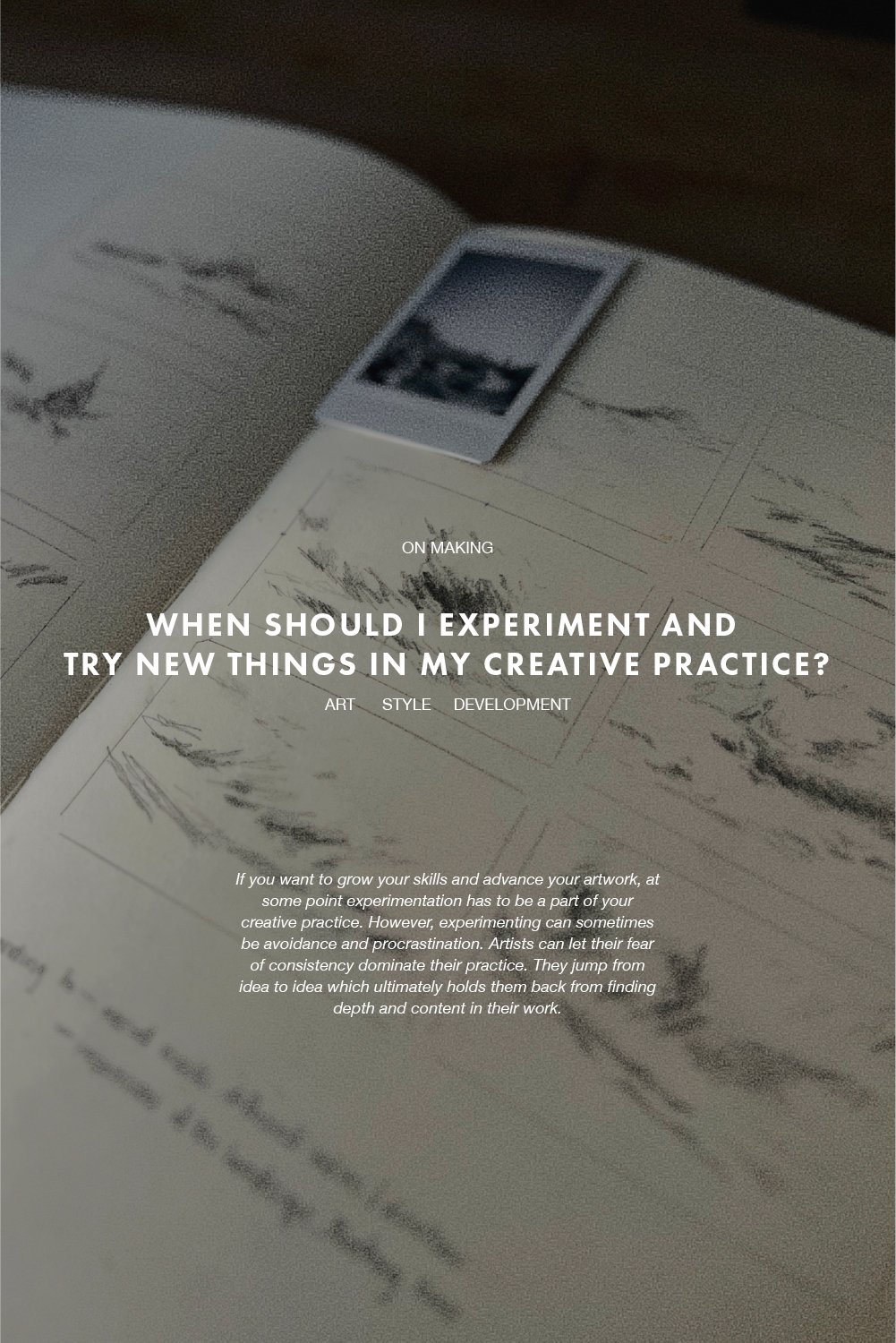When should I experiment and try new things in my creative practice?
This post is a part of On Making - a weekly project where I answer questions about how to think about and develop your body of work as a visual artist. Each answer is intended to be a brief read that concludes with a guiding action you can consider immediately. If you’d like to subscribe to this ongoing support, consider joining me on Substack. Each question will be cross-posted for delivery to your inbox.
If you want to grow your skills and advance your artwork, at some point experimentation (exploration and play) has to be a part of your creative practice. Experimenting and trying new things helps artists find what’s unique to them. It creates an opportunity to work in new ways which can result in new solutions to artistic decisions. It can also keep things from getting boring. Experimentation makes space for spontaneity and risks - two very important elements if you want to advance your work.
However, sometimes experimenting can be avoidance and procrastination. Artists can let their fear of consistency dominate their practice. They jump from idea to idea which ultimately holds them back from finding depth and content in their work. But if you can differentiate between avoidance and procrastination and productive experimentation, you can find guidance in your creative practice. When is appropriate to experiment and try new things in your creative practice?
Your artwork is no longer matching the vision you have.
As an artist, you are always taking in information. And it’s a lot easier to visualize new compositions in your head. But sometimes your technical skills don’t yet match. When you begin to experience the gap between your current artwork and where you can envision it - then it might be time to stop making artwork in the same way you always have. It might be time to start experimenting. To begin advancing your skills and mapping out what you see.
You’re bored and uninspired by your artwork.
Sometimes consistency brings monotony. And this monotony can become stale and boring. Experimenting means bringing spontaneity into your creative practice. It means feeling and seeing new things.
You’re wanting to learn something new about your artwork.
Experimenting, in the traditional sense, is, after all, testing a hypothesis. So maybe you are hoping to learn something new about your artwork. Perhaps you are curious to experience a new material, tool, or approach — and learn if it might enhance your artwork. Experimenting and trying new things creates a classroom for acquiring new knowledge.
You want to get to know yourself better.
While creating artwork is about technical skills, if you are seeking to hone in on your style, going deeper with yourself is equally important. This helps you understand what concepts, topics, and subjects, will be present in your body of work. And experimenting can help you start to discover new ideas that are just below the surface.
To help answer when you should experiment and try new things in your creative practice, it’s important to find the reason for experimenting. Going deeper with your artwork and practicing consistency is important. And when you are ready to experiment, it should be based on a productive reason.
If we haven’t had the pleasure of meeting - I’m Lauren Sauder, a landscape artist and artist mentor. If you enjoyed this post, here are a few more ways you can connect with me:
Explore more posts from On Making—a series for artists that archives my thoughts on questions I’ve received from my mentees.
Submit a question to this series—all submissions may be made anonymously.
Receive letters from me—bi-weekly letters from me about what I’m working through in my creative practice and life.
Enlist me as your mentor—if you are interested in unlimited support and guidance to grow your creative practice.
Get in touch with me directly—send an email to laurensauderstudio@gmail.com.
Save this post on Pinterest


